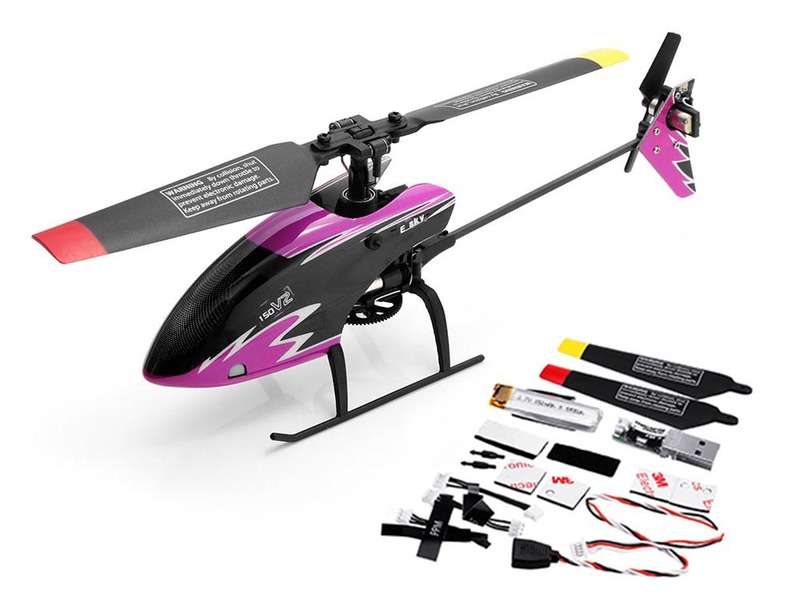How do helicopters land without falling over?

Helicopters are able to land without falling over due to the design of their rotors. The rotors on a helicopter are designed to provide lift and thrust, and they also provide stability when the helicopter is in flight. When a helicopter is in the air, the rotors are spinning in a circular motion, creating a gyroscopic effect. This gyroscopic effect helps to keep the helicopter stable and upright while it is in the air.
When a helicopter is approaching the ground to land, the pilot will reduce the speed of the rotors. This causes the gyroscopic effect to decrease, and the helicopter will begin to descend. As the helicopter descends, the pilot will also adjust the pitch of the rotors, which will cause the helicopter to tilt slightly forward. This tilt will cause the helicopter to move forward, and the pilot will use this forward motion to land the helicopter.
The pilot will also adjust the angle of the rotors to provide additional lift and thrust as the helicopter approaches the ground. This lift and thrust will help to keep the helicopter stable and upright as it lands. The pilot will also adjust the angle of the rotors to provide additional drag, which will help to slow the helicopter down as it approaches the ground.
Once the helicopter is close to the ground, the pilot will reduce the speed of the rotors even further. This will cause the helicopter to descend more slowly, and the pilot will use the remaining lift and thrust from the rotors to keep the helicopter stable and upright as it lands. The pilot will also adjust the angle of the rotors to provide additional drag, which will help to slow the helicopter down even further.
Once the helicopter is close enough to the ground, the pilot will reduce the speed of the rotors to zero. This will cause the helicopter to settle onto the ground, and the pilot will use the remaining lift and thrust from the rotors to keep the helicopter stable and upright as it lands.
In summary, helicopters are able to land without falling over due to the design of their rotors. The rotors provide lift and thrust, and they also provide stability when the helicopter is in flight. When the helicopter is approaching the ground to land, the pilot will reduce the speed of the rotors, adjust the pitch of the rotors, and adjust the angle of the rotors to provide additional lift and thrust. The pilot will also adjust the angle of the rotors to provide additional drag, which will help to slow the helicopter down as it approaches the ground. Once the helicopter is close enough to the ground, the pilot will reduce the speed of the rotors to zero, and the helicopter will settle onto the ground.
Comments / Question
2. Adjust the Throttle: By adjusting the throttle of the helicopter, pilots can reduce the rate of descent, allowing for a smoother landing.
3. Use Flaps: Flaps are small movable surfaces on the wings of a helicopter that can be adjusted to increase lift. By deploying the flaps while landing, pilots can reduce the rate of descent and make the landing smoother.
4. Increase Rotor RPM: Increasing the rotor RPM of the helicopter as it approaches the ground will reduce the rate of descent and make the landing smoother.
5. Utilize Ground Effect: Ground effect is the cushion of air created by the downward flow of air from the rotors when the helicopter is close to the ground. This effect can be used to reduce the rate of descent, allowing for a smoother landing.
2. Visual inspection: The pilot should visually inspect the landing area to make sure it is suitable for a safe landing.
3. Radio communication: The pilot should establish radio communication with the airport or heliport to ensure the landing site is clear and there are no other aircraft in the vicinity.
4. Descent: The pilot should make a controlled descent to the landing site, avoiding any sudden changes in speed or direction.
5. Hover: The pilot should hover approximately 10-15 feet above the ground and assess the landing area one last time before descending.
6. Touchdown: The pilot should make a smooth touchdown, keeping the helicopter in a level attitude and avoiding any sudden changes in speed or direction.
7. Post-landing checklist: After the helicopter has landed, the pilot should complete a post-landing checklist to ensure the aircraft is in a safe condition for the next flight.
2. Visibility: Poor visibility due to fog, dust, smoke, or other environmental factors can make it difficult for a pilot to identify a safe landing spot.
3. Terrain: The terrain of the landing area can affect a helicopter’s ability to land safely. For example, if the landing area is uneven or has obstacles, the pilot may need to adjust the approach to ensure a safe landing.
4. Weight: The weight of the helicopter and its cargo can affect its ability to land safely. If the helicopter is carrying too much weight, it may be difficult to slow down and land safely.
5. Mechanical Issues: Mechanical issues such as engine failure or a malfunctioning component can affect a helicopter’s ability to land safely.
2. Maintain a stable hover at the desired landing spot.
3. Reduce collective to reduce the rate of descent.
4. Monitor the rate of descent and adjust the collective as necessary.
5. Monitor the wind and adjust the cyclic as necessary.
6. As the skids near the ground, reduce collective and flare the aircraft.
7. Touch down gently and reduce the collective to the ground.
8. Maintain a stable hover until the aircraft is safely on the ground.

